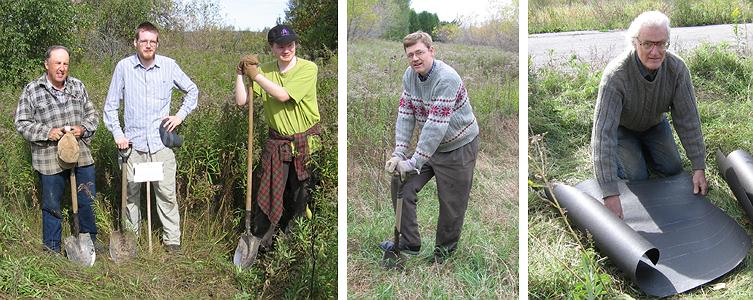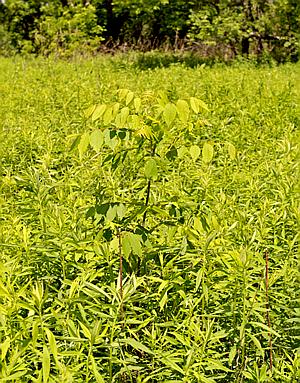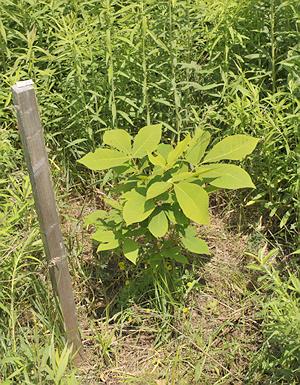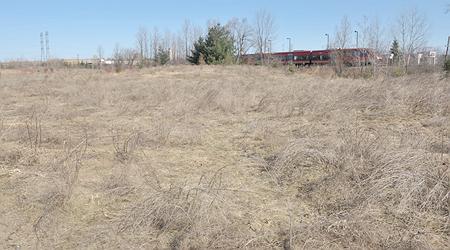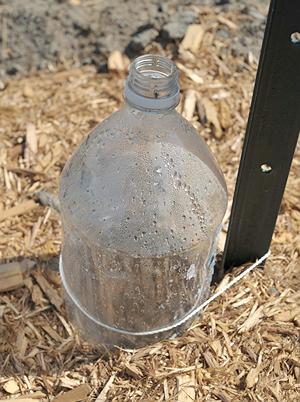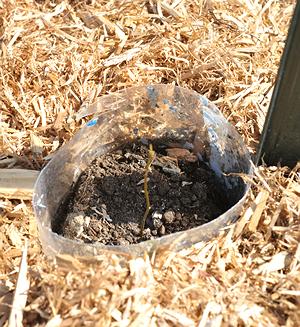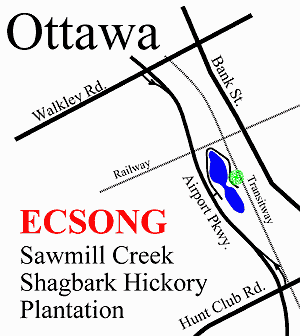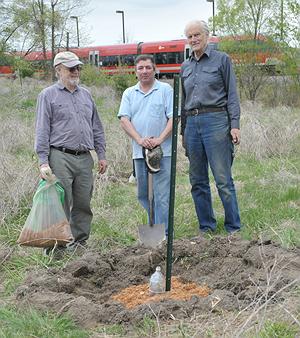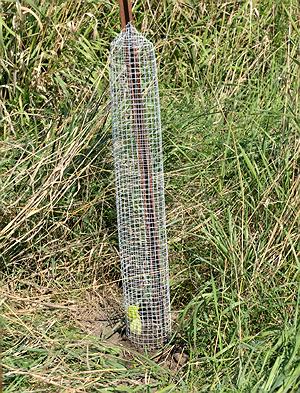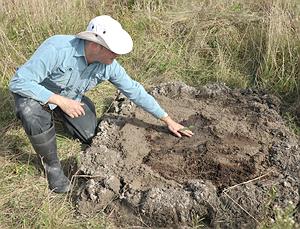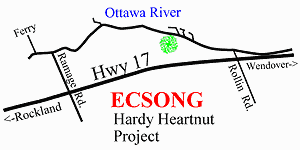To preserve the C.ovata lavanti genome, nuts have been collected from the site for several years. Some were planted in back yards in Ottawa and Lanark, most given to the Ferguson Forest Center in Kemptville to grow and distribute to areas north of the main range of the species.
Dolman Ridge
The spring of 2005, 100 of the 2003 crop in peat pots from Ferguson, and 8 of the 2002 crop raised in Ottawa, were planted out on a site provided by the National Capital Commission along the restricted access portion of the Dolman Ridge Road. (S at right. An NCC access permit is required for vehicular access; foot access is from the Dewberry Trail parking lot at the gate.) It is isolated from existing hickory populations by at least a kilometer. The soil is sandy and well drained. They were surrounded with a meter-square roofing paper ground cover to suppress competition, as shown at right. This usually permits an 90% survival of tap-rooted seedlings planted in meadows here, where goldenrod and asters reach a meter in height. It also permits the seedlings to be found in early years. (Commercial plantings use Simazine, a pre-emergent herbicide, for this purpose. Since this is a Ramsar conservation area, no toxic substances are permitted.) The paper is removed once the trees rise above the surrounding forbes. In any case, it has been found to almost completely disintegrate on its own within 10 years when in contact with soil.The ultimate aim was to have a reserve population approximately equal in size to the original at Lavant.
The first weekend after planting was completed, a vandal uprooted and destroyed a dozen of the seedlings nearest the road, including half of the home-grown plants. After signs were posted noting that this was a research planting, and chats with regular dog walkers in the area about the importance of the planting, the vandalism ceased. Then, it turned out that the roots of all the Ferguson trees had been killed over the winter before planting. Solely 4 of the 8 transplanted bare root survived.
The fall of 2005, 120 seedlings from the 2003 crop, grown by Len Collett of Lanark, were planted. They were mixed in one area with 15 bear oak (Quercus illicifolia) grown from seed obtained from Tamworth ON, in another with 30 white oak (Quercus alba) grown from seed from trees on the Dolman Ridge, in another with 10 American chestnut (Castanea dentata) also grown from seed from trees on the Dolman Ridge. Other suitable species will be interplanted later, once the pattern of survival of the shagbarks is determined. The aim is to have the plantation half shagbark, half other compatible species, the ratio found at the Lavant site.
By late spring 2006, up to half of the seedlings appeared to be dead from stem rot. It seems that these shagbarks are much more susceptible to rot over winter than are shagbarks from the main population range. So, the paper was ripped back several centimeters from the trunks of all of them to ensure adequate water drainage and ventilation, even though this reduced the effectiveness of the paper in suppressing competition. This experience suggests that the failure of the Ferguson seedlings was due to excessive root moisture. The seedlings certainly had not dried out (a common problem with plants in peat pots) as they were covered by healthy moss when received.
Overall survival by spring 2007 since planting of the shagbarks was about 30% (excluding the Ferguson trees and those destroyed by the vandal). It is difficult to make a precise survey as they leaf out well after the surrounding forbes which exceed them in height by that time. Growth is very slow, due to the lack of light, but the surviving trees were in good health.
180 viable seeds were collected by Len Collett in the fall of 2008. For the first time in years, no red squirrel got around to dropping the seed of one Lavant tree until mid-September. Half were planted immediately in situ in the frozen earth; the remainder were put in a frig for stratification.
The spring of 2009 was devastating - a prolonged early warm spell broken by a sharp frost on 12 April that affected many trees in the area. Only 15 surviving shagbarks were found.
A good crop of Lavant nuts was collected fall 2011; 200 were planted throughout the plot.
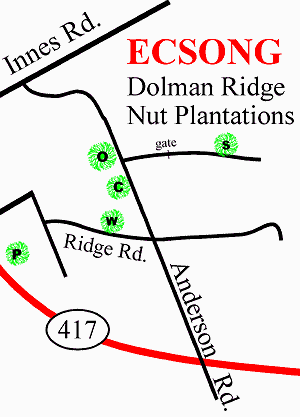
What a difference water and soil make!
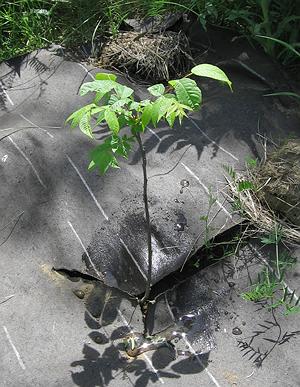
this seedling is in its third year of growth in sandy soil where no watering is possible - it's 20 cm tall.
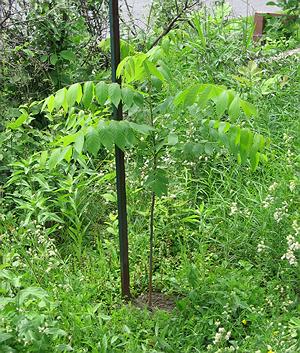
this one is also in its third year of growth, but is in loam and was watered twice a week whenever rainfall was less than 3 mm/day - it's 120 cm tall.
